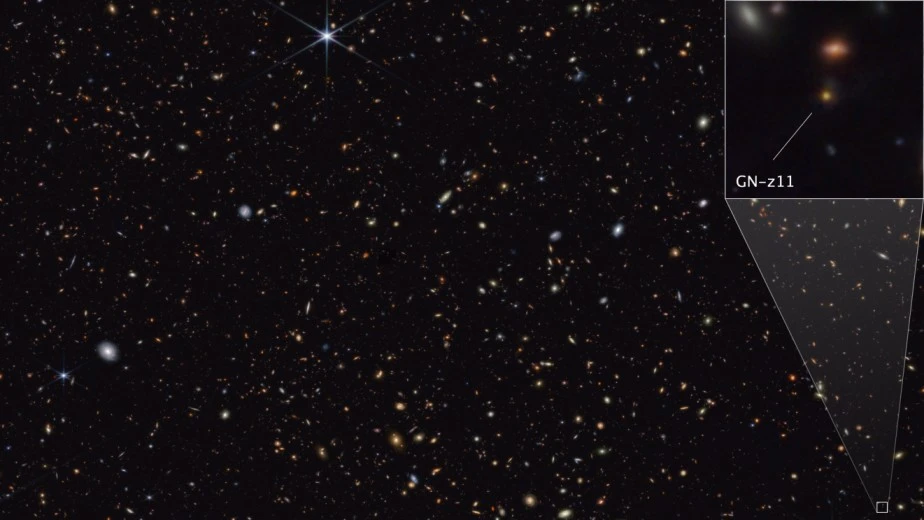The James Webb telescope of NASA was first launched to discover the stars that first existed after the Big Bang, and it has just done its job right. It has looked upon a galaxy that has existed since the universe for 430 million years.
Youngest and the most distant galaxy ever observed
As always, NASA’s team has been indulging themselves in the study of space and time, and this time, it is the youngest and the most distant galaxy ever observed, which is so bright that the scientists cannot figure out why. What is even more surprising? It is the discovery of a supermassive black hole observed right in the centre of the galaxy powering it and is the most distant to be ever spotted.
The principal investigator, Roberto Maiolino of the Cavendish Laboratory and the Kavli Institute of Cosmology explained that they have found extremely dense gas, which is very common in the vicinity of supermassive black holes accreting gas. These were the first clear signals that GN-z11 might be hosting a black hole that is a gobbling matter.
The galaxy is not only throwing out ionized chemical elements but also a very strong and powerful wind and is believed to be high in velocity only when it is rapidly accreting a supermassive black hole.
What went into the discovery?
The first team used a Near-Infrared camera to track down the host galaxy and a firm source with constant colours around the black hole in an accretion disk. The second team used Webb’s Near-infrared spectrograph to discover helium forming in a halo around GN-z11, which is predicted to have pockets of pristine gas blowing inside the halo.
Furthermore, to gain more knowledge about this new world, researchers and scientists will do an in-depth observation and study about it to build up strongly on the case for the stars called Population lll that might be present in the halo











